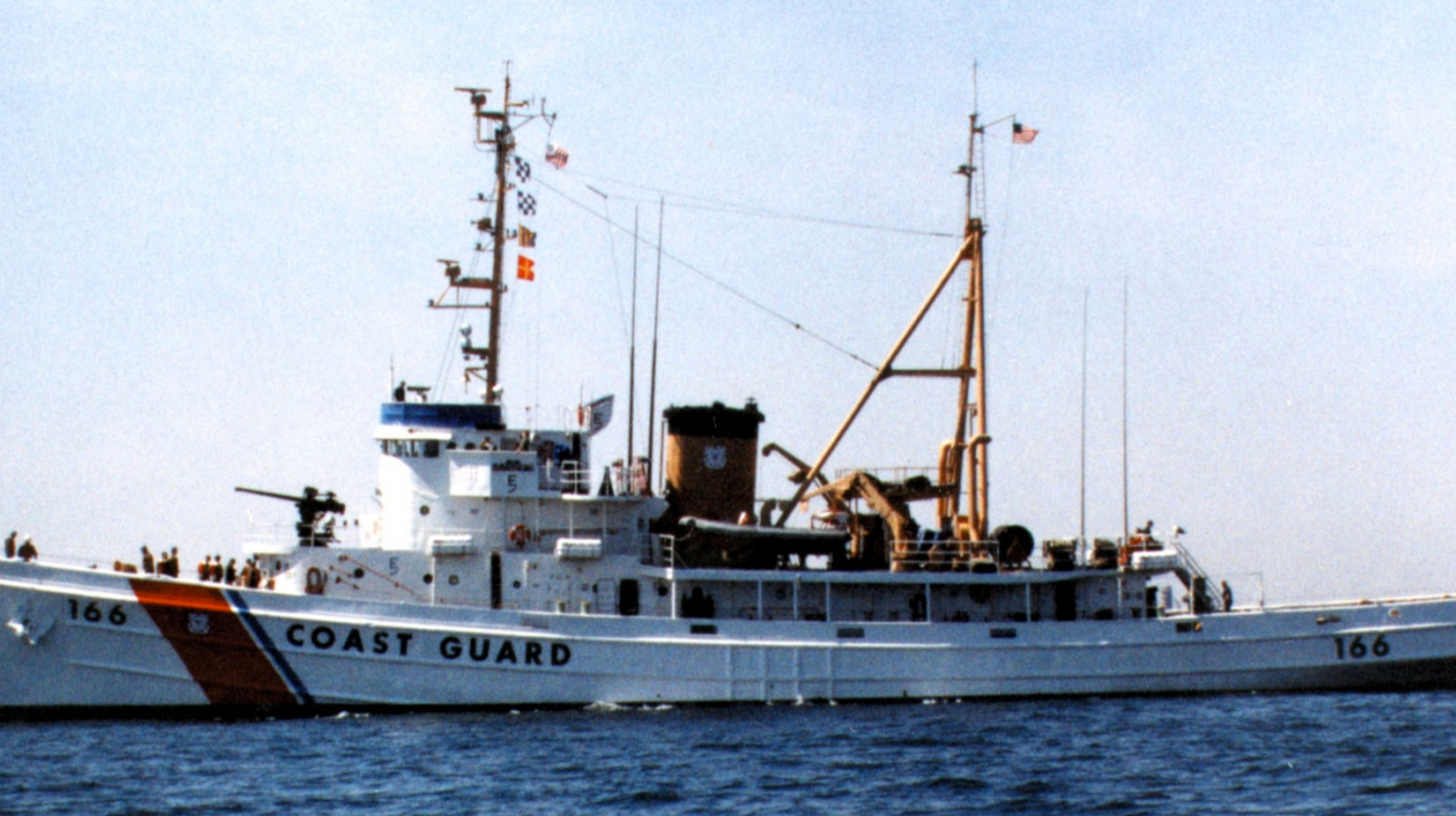‘Perfect Storm’ ship to join reef off N.J. coast on Wednesday

The U.S. Coast Guard cutter Tamaroa. (USCG image)
Rough seas last month delayed the sinking of a famed U.S. Coast Guard ship.
But on Wednesday, “Tamaroa” will find a new home on the seafloor 33 nautical miles off Cape May, New Jersey, The Press of Atlantic City reported.
Soon to be part of New Jersey’s artificial reef program, the vessel will provide a habitat for sea life.
Tamaroa was involved in the rescue of seven people during the fierce storm immortalized in the film and book “The Perfect Storm.”
A seafloor deployment was originally planned for the 25th anniversary of the massive late October 1991 storm but delayed due to the late issuance of tests that found that the ship does not contain cancer-causing chemicals.
During the 1991 storm, seas reached as high as 40 feet and winds at 80 knots, and Tamaroa was first called to rescue the three person crew of the 32-foot sailboat Satori that was traveling from New Hampshire to Bermuda. The cutter was then called to rescue the crew of a New York Air National Guard helicopter crew that had ditched into the ocean after running out of fuel during a similar rescue mission. The Tamaroa crew rescued four of the five air crewmen.
Prior to the 1991 rescues off Massachusetts, Tamaroa already had a storied history.
Commissioned in 1943 and serving until 1994, the ship was originally the U.S. Navy’s Zuni, a 205-foot ocean tug, that earned four battle stars for service during World War II, according to the Coast Guard.
The vessel was then transferred to the Coast Guard in 1946 and named Tamaroa, following the tradition of naming cutters after Native American tribes.
The ship was stationed in New York City through 1985, conducting a variety of missions, including search and rescue operations and service along and off the Jersey Shore, according to Coast Guard history.
In May 1950, the cutter was at the scene of a chemical explosion and fire on a pier along the Raritan Bay in South Amboy. Then in June 1956, the Tamaroa crew assisted in retrieving bodies and debris from a aircraft crash involving Venezuelan Airlines Super Constellation 32 miles off Asbury Park that killed 74. More than two years later in October 1958, the crew participated in a search and rescue operation after a New Jersey Air National Guard F-84 exploded in the air off Monmouth Beach.
A plan to make the ship a museum was scrapped in 2012 after an inspections revealed structural problems with its hull. Tamaroa will now serve marine life by joining numerous ships that now call the sea off New Jersey home.
The state holds permits for 13 artificial reefs in federal waters and two in state waters that encompass 25 square miles of ocean floor.
Providing a habitat for a variety of marine organisms to grow along with food and habitat for fish and shellfish, the reefs are made of rocks, concrete and steel, and old ships and barges.
“DEP studies have shown that these materials are colonized quickly with organisms such as algae, barnacles, mussels, sea stars, blue crabs, and sea fans that attract smaller fish which, in turn, attract black sea bass, tautog, summer flounder, scup, lobster and other sought-after species,” a state released issued last year said.
The state funds the program through excise taxes on recreational fishing gear and motor boat fuel.
WHYY is your source for fact-based, in-depth journalism and information. As a nonprofit organization, we rely on financial support from readers like you. Please give today.

